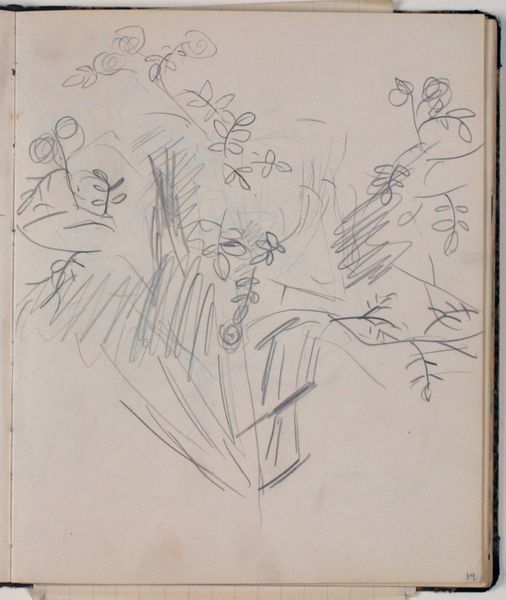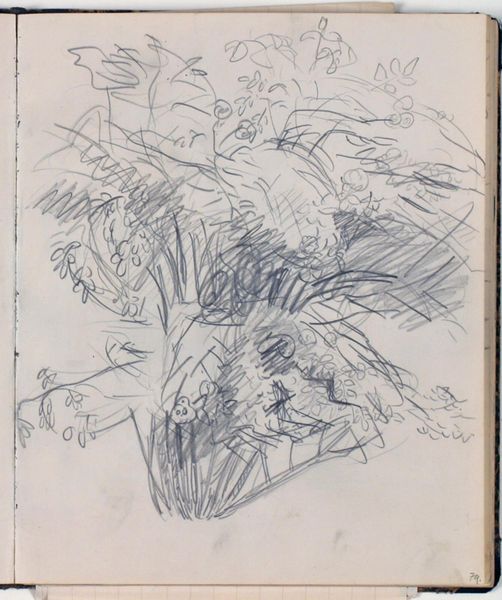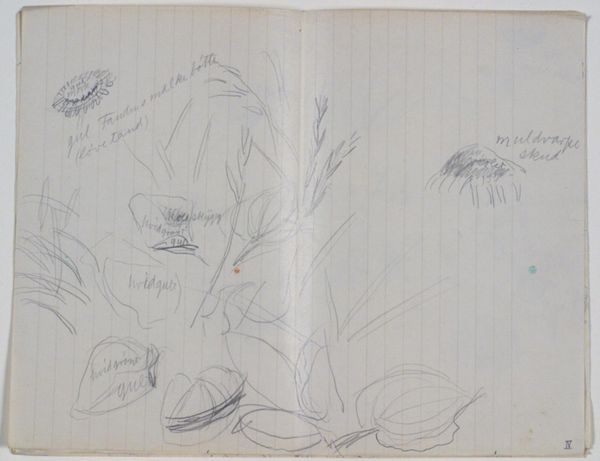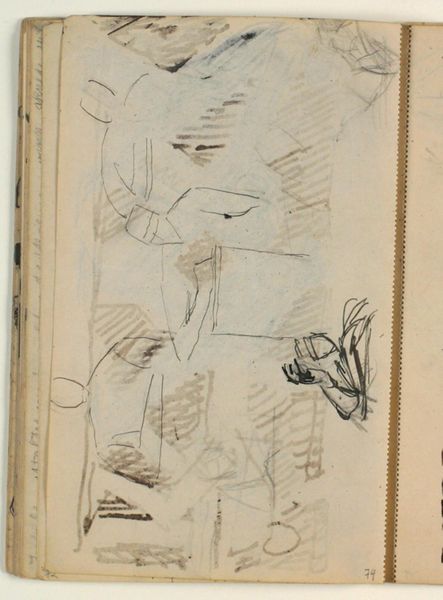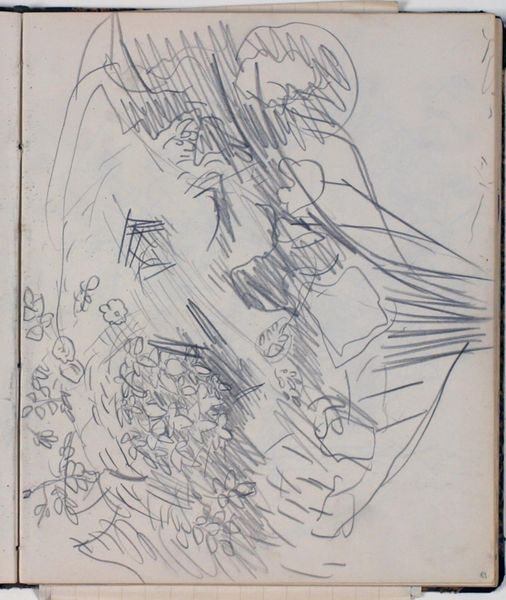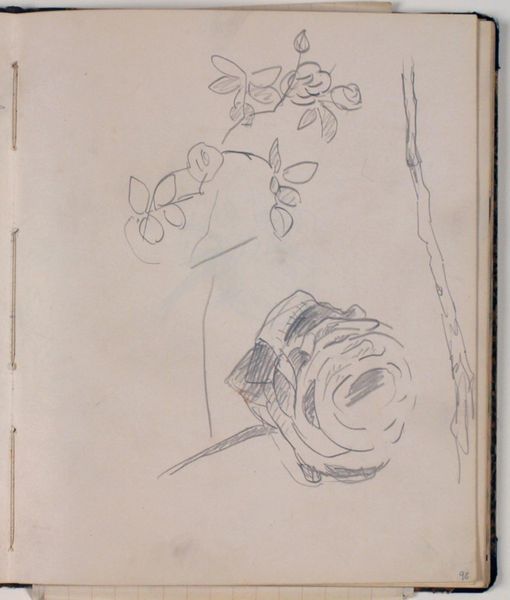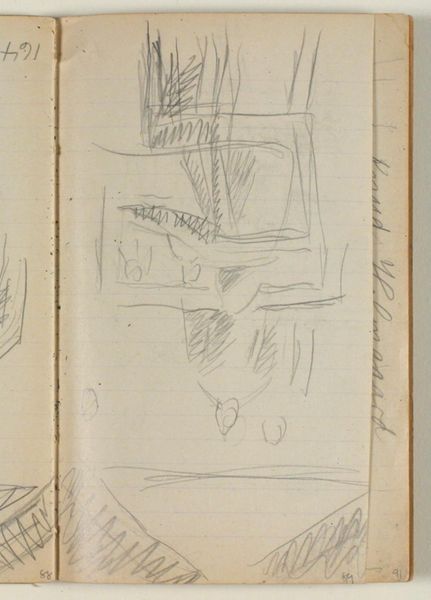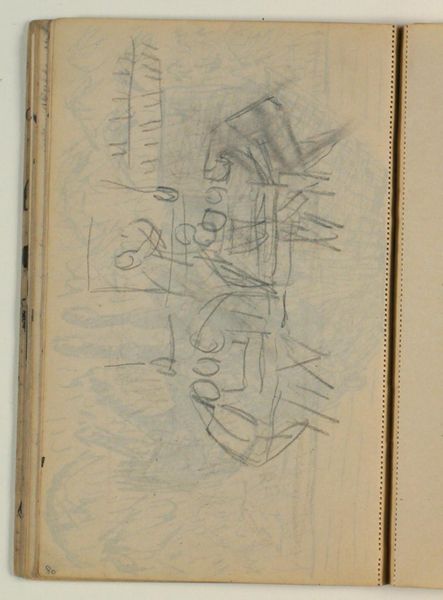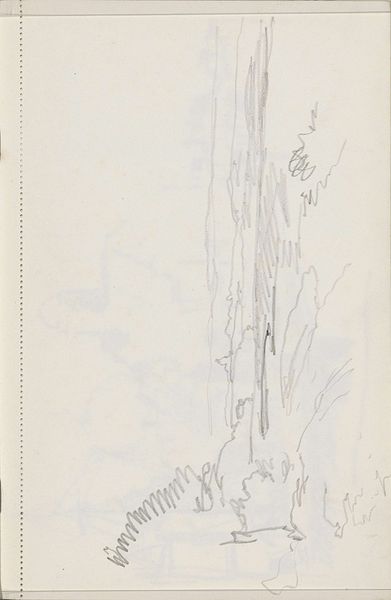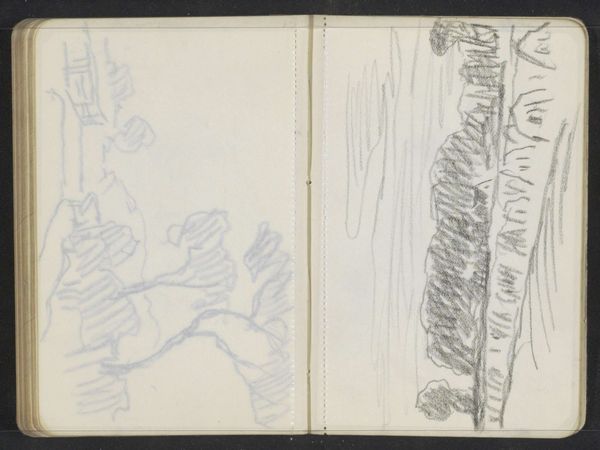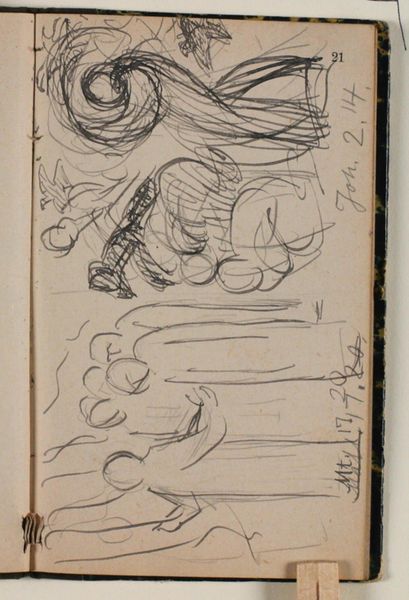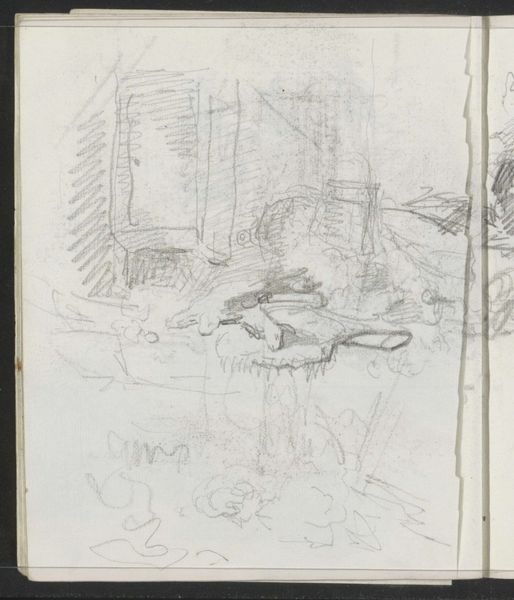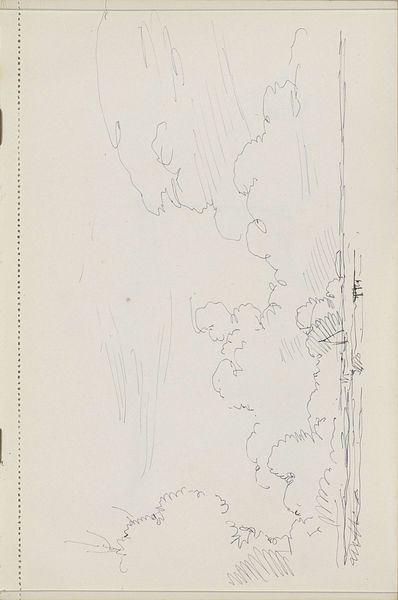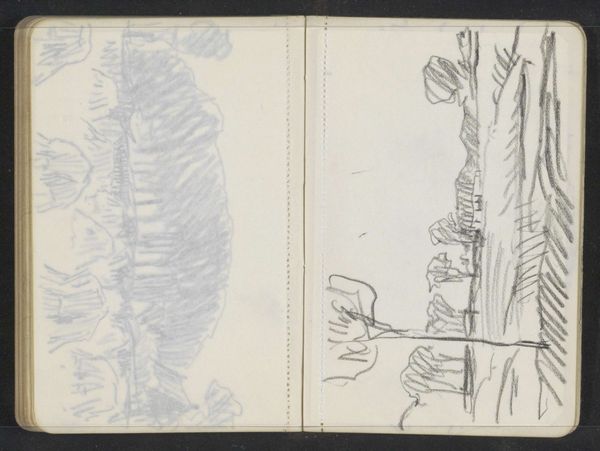
drawing, pencil
#
drawing
#
organic
#
quirky sketch
#
pen sketch
#
incomplete sketchy
#
personal sketchbook
#
sketchwork
#
ink drawing experimentation
#
sketch
#
pen-ink sketch
#
pencil
#
sketchbook drawing
#
watercolour illustration
#
sketchbook art
Dimensions: 226 mm (height) x 185 mm (width) x 112 mm (depth) (monteringsmaal), 221 mm (height) x 184 mm (width) (bladmaal)
Curator: This work, titled "Plantestudier," or "Plant Studies," was created by Niels Larsen Stevns between 1930 and 1936. It’s currently held at the SMK, the Statens Museum for Kunst. Editor: It has such an immediate, almost dreamlike quality to it. The quick pencil and ink strokes remind me of botanical illustrations, but freed from any obligation to strict realism. Curator: Indeed, it speaks to Stevns's engagement with natural themes in a period of shifting artistic priorities. Stevns and his contemporaries had to find ways to forge new artistic avenues beyond Impressionism. We should look for ways he took advantage of that dynamic. Editor: Absolutely. The stylized plant forms resonate with folk art traditions, a connection further highlighted by the way Stevns distills shapes into potent visual symbols, like simplified leaves suggestive of miniature heraldic emblems. Almost talismanic, wouldn’t you say? Curator: Well, considering the historical context of these works as emerging between world wars, such forms evoke not only themes of regeneration, but, crucially, that artistic renewal as part of social recovery. Editor: Ah, so there's a connection with other cultural institutions supporting artists to show ways of responding to disruption, perhaps a sense of continuity even amid the upheavals of war and technological change? Curator: Precisely! These plant studies were not merely botanical exercises but asserted the enduring relevance of observation and representation as conduits to communal resilience. Editor: And by utilizing familiar motifs rendered newly potent through abstraction, Stevns tapped into cultural memory, ensuring that the artwork functioned as both artifact and symbol—a potent reminder of growth, regeneration, and, ultimately, hope. Curator: Stevns created these drawings during times when Denmark had to make significant social policy decisions. Understanding his imagery through this perspective opens the door for understanding ways in which art was mobilized toward certain ends. Editor: So, beyond just beautiful drawings of plants, we have emblems of hope in the face of social uncertainty... Curator: Indeed. And symbols of how social institutions like museums shaped public art to fulfill the promise of social regeneration.
Comments
No comments
Be the first to comment and join the conversation on the ultimate creative platform.
